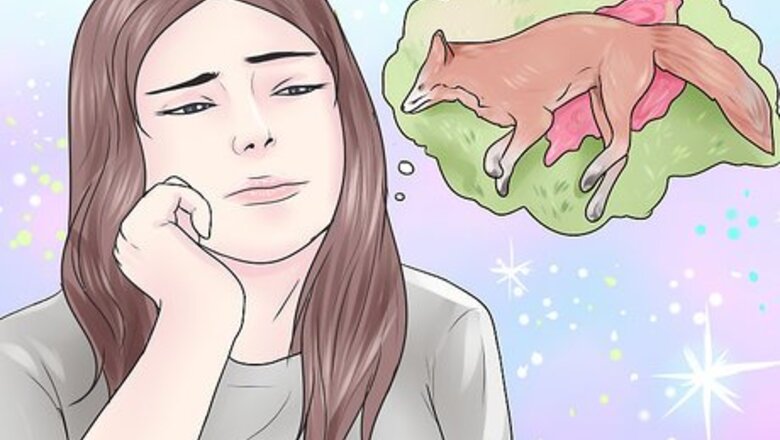
views
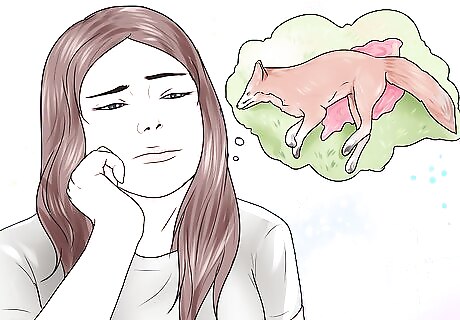
Overcome your squeamishness. While eating roadkill isn't going to seem like an attractive option for many people, if you're the slightest bit curious, at least learn about it and then make up your mind. Roadkill has been consumed by people in impoverished situations or for ethical, environmental, and pragmatic reasons for as long as there have been roads and human vehicles to knock over animals. Eating roadkill offers an affordable means of obtaining meat, and with an average of about one hundred million roadkills in America alone every year, it's a plentiful food source. It can be a chance to eat meat you'd never normally contemplate, like bear or squirrel meat. And for a growing number of people around the world, it's an environmentally responsible and considerate way to dispose of animals killed on our many roads. Even vegetarians and vegans have been known to enjoy a feast of roadkill. Finally, for those who are still feeling squeamish, there are people who argue that knowing how to eat roadkill is an essential survival skill for those times when disaster strikes or you're hopelessly lost and hungry. As one commentator has stated: "As long as the meat is reasonably fresh and well cooked, it will not matter one iota how the animal met its end." By removing roadkill, you're possibly saving another life or more. Roadkill begets roadkill as scavenger animals come along to enjoy the meal and themselves turn into additional roadkill victims. If you're still revolted, consider the thought that it is waste that is more unpalatable than responsible adults making a decision based on common sense and diligence to eat meat that's offered for free.

Investigate the possibilities. The best thing you can do at the start is to get to know people already foraging for roadkill and learn off them. They can show you how to find the roadkill opportunities in your area and they can teach you the signs of what to look for to assess the safety or otherwise of the roadkill for consumption. Look for adverts in local papers or ask around for skill-sharing workshops which are enthusiastically promoted by those who believe in the value of eating roadkill. Such workshops teach you about how to spot good roadkill, how to skin it, how to cook it, and how to store it.
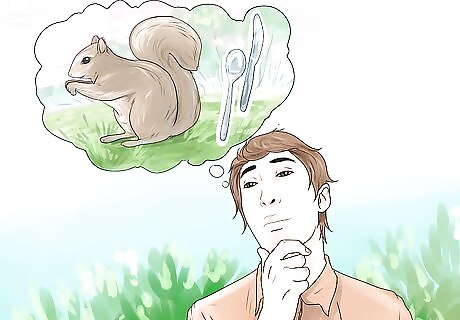
Know which animals are probably the most suitable. Roadkill animals that are considered edible include: Badger, hedgehog, otter, rabbit, pheasant, fox, beaver, squirrel, deer (venison), moose, bear, raccoon, opossum, kangaroo, wallaby, etc. Reptiles can also be eaten, but they might be fairly squashed. Rats may carry Weil's disease and are therefore best avoided. The gray area is eating cats and dogs; for some, this is too squeamish as these are pets (especially when they have their collars on); but for others, they're not really concerned. On balance, it's probably the kindest to pull the pet off the road and to alert the owners to come and collect it.

Know the law. It's important to check the laws of your state, province, region, or country as to roadkill collection and eating. In some American States, for example, it isn't legal to eat roadkill, while in others, it is legal but sometimes the ownership of certain animals vests in the local wildlife departments and must be distributed through them first, or you may need a permit. There may also be local or temporal bans based on increased risk of certain diseases etc., that might have flared up. It's a good idea to stay knowledgeable about the rules and disease risks.
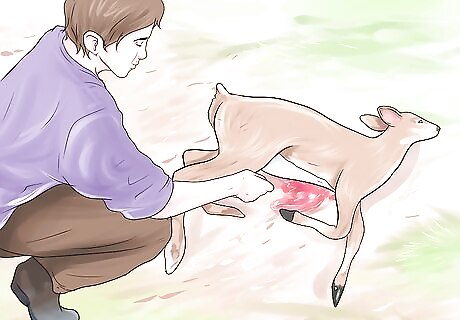
Learn the signs of healthy roadkill. Roadkill is safe to eat in many instances but there are risks of rotting, rabies, and disease. You can avoid these risks by knowing what signs to look for and using common sense: Look for freshness. Obviously, if you have witnessed the animal being hit, it's fresh. In terms of coming across roadkill, signs of freshness include clear eyes, fleas still active on the fur or hide of the animal and general signs of it looking fresh. Rigor mortis sets in quickly, so stiffness of the body does not mean that the animal is not fresh. Use the temperature as a guide. Roadkill in winter is likely to remain fresher longer than roadkill in summer. Avoid roadkill that has maggots, fly, or other scavenging insect infestations, as this indicates a lack of freshness. However, the presence of fleas is a good sign and means that the animal is probably still edible. If the animal's eyes are milky, clouded, or white, it is less fresh but may still be edible. If it stinks of rotting flesh, trust your nose but be aware that there will be some stench just as a result of the impact, as wind, excrement, etc. is forced rapidly through the body. This odor may release when moving the carcass too, so odor isn't the sole indicator of the state of the meat. Look for whole roadkill. Roadkill that has to be scraped off the road because it has been flattened or is so crushed up as to be unrecognizable is not worth it and won't be healthy for you to consume. Avoid roadkill in the middle of roads. Instead, look along the side of roads, on the shoulders and beyond, where bodies often end up from impact or after crawling away from the hit point.. Except in a survival situation, don't eat roadkill you aren't sure is fresh. Why risk your health? If the roadkill seems to be in good shape, you could still use the hide.
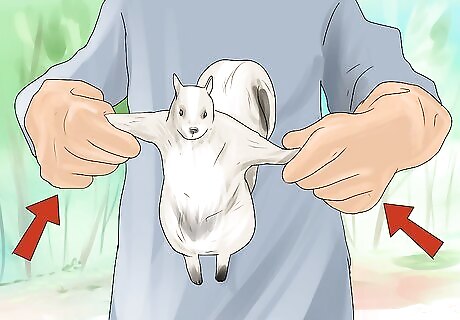
Avoid getting rabies. Although rabies dies quickly once the host is dead, it's advisable to wear gloves when handling, gutting, and skinning warm-blooded animals and to ensure that you don't have open wounds that could be infected. The cooking process kills rabies but it is probably a good idea to boil known rabies carriers first (foxes, skunks, raccoons, etc.).

Butcher the carcass. Field Dress a Deer or other large animal to cool it promptly so it doesn't spoil. (You'll need an easily-cleaned place such as the back of a truck to put it.) Whether the animal is a big, like a deer, or small, like a squirrel, or even a bird, like a turkey, you'll need to skin and gut it before cooking. You could tan or even stuff the skin for a unique souvenir or practice for making a proper hunting trophy in the future. The organs are often just thrown away, but the heart and liver are often eaten. Organs spoil quickly, so do not eat them unless the meat is absolutely fresh.
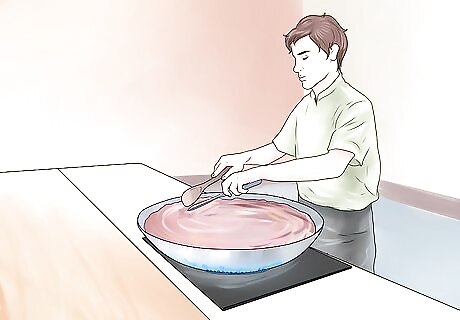
Cook the meat thoroughly. This step is vital to ensure that you kill off pathogens or parasites (such as worms) that might be present in the meat. Use a temperature that's higher than usual to ensure that the meat is well cooked. (Always beyond "well done".) Use a Meat Thermometer. Make it a part of the occasion; have a backyard party while the meat cooks well. It would be most fitting to cook your roadkill on your engine. Don't risk skimping on thoroughness of cooking, though.
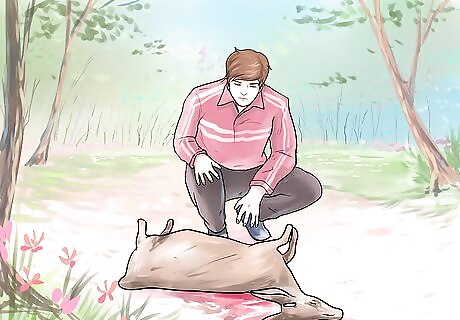
Bless your roadkill. For many promoters of eating roadkill, it is an indictment on our fuel-driven, human-centric society that so many animals die each year on our roads for the sake of humans going from A to B for purposes we find important but that completely disrupt the lives of animals and their normal foraging, hunting, mating, and migration patterns. Following this line of thinking through, by eating roadkill you're making the most of a terrible outcome from the animals' perspective, and the least the animal deserves is your compassionate blessing.




















Comments
0 comment